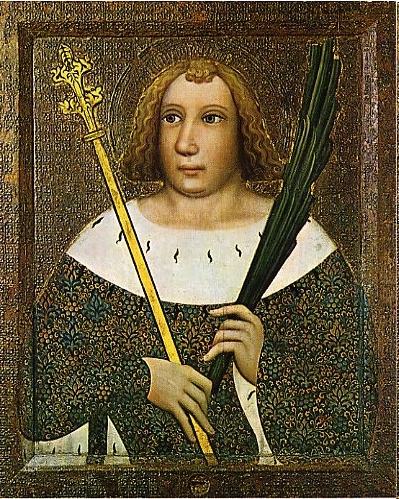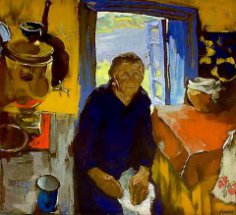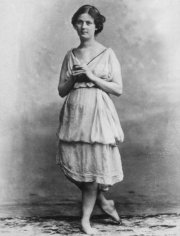
In fact, it's not a dance, but a symptom of a disease, and its name combines symptoms, superstitions, beliefs, and much more. However, such diseases still exist today.
People simply feared “St. Vitus's Dance.” After all, the church could declare the behavior of a person afflicted with this disease to be a sign of demonic possession. And how demonic possession was combated in the Middle Ages is well known. They could even try to save an innocent soul from demons with the purifying fire of an auto-da-fé.
Nowadays, it's called “St. Vitus' chorea,” “Huntington's chorea” (from the ancient Greek χορός, meaning dance), dissociative convulsions , or psychogenic movement disorder . In the 13th century, choreomania (or chorea) was the name given to the “dancing epidemics” that occasionally spread among the populations of European countries. In the first half of the second millennium, such epidemics were rare but regular. Among the most famous cases, the following are worth mentioning.
- In 1021, in the small German town of Kölbig, a group of 18 peasants began dancing for no apparent reason on Christmas Eve. Just like that, without music. They danced until they were completely exhausted. Some died from it, and others suffered from seizures from time to time until their deaths.
- In 1237, a large group of people—over 200 people—who were crossing the Moselle Bridge in the Netherlands suddenly began dancing. The bridge resonated with the dancers, causing its vibrations to intensify and collapse. Almost all of the dancers perished.
- In 1247, a dancing epidemic struck children in Germany. Over a hundred children walked from Erfurt to Arnstadt (around 20 km), dancing and jumping nonstop. In the city they reached, they collapsed, completely exhausted. About half of them died; those who survived suffered from occasional convulsions for the rest of their lives. This true story is believed to have inspired the fairy tale of the Pied Piper of Hamelin.
- In 1370, a dancing epidemic struck several cities in Germany and the Netherlands. People would suddenly start dancing in the streets until they collapsed from exhaustion. Some died, and those who survived suffered convulsions.
- Five years later, in 1375, a resurgence of the dancing epidemic occurred in Germany and the Netherlands. Survivors reported that visual hallucinations drove them to jump: they imagined blood flowing in the streets, and they leaped to leap over the streams.
Scientists still debate the causes of these strange epidemics, although the disease is now known as Huntington's chorea (or St. Vitus's dance).
What does a Christian saint have to do with this? Saint Vitus (Latin: Vitus) lived in Rome in the 4th century CE; his feast day is celebrated on June 15. He was the son of a wealthy Roman. For his faith, he received the gift of healing the insane (in the terminology of the time, he could exorcise demons possessing people). Because he was a Christian, he was sent to the arena of the Colosseum to be torn to pieces by wild animals. The animals spared him, so the martyr was boiled in boiling oil. This happened in 303 CE.

Saint Vitus
His relics were discovered in the 9th century. When they were transported to a chapel in the town of Zabern (now Sabern, Alsace), spontaneous healings occurred among those supposedly possessed by evil spirits (that is, by our modern standards, those suffering from epilepsy and chorea).
After this, people suffering from these ailments would make a pilgrimage to the chapel where the miraculous relics were kept on St. Vitus's feast day and dance there. In the 16th century, a belief arose that a sick person who danced before the saint's statue on June 15, his feast day, would be cured, while the healthy would receive a great boost of energy for the entire year. St. Vitus himself became considered the patron saint of the insane.
People danced and danced. In 1518, all of Strasbourg was gripped by the “dancing plague”: up to 400 people danced wildly in the streets, without any music. Hoping for a cure, for health and vigor, people walked from Strasbourg to Zabern in a religious procession. And they danced… And at the end, near the chapel, they were cured of chorea.
What is chorea? Chorea is a symptom. An important symptom indicating a number of diseases, although one of them, Huntington's chorea, is also, apparently, chorea.
It manifests itself in chaotic, involuntary movements of the limbs due to certain pathological processes in the brain caused by injuries or various diseases (cerebral palsy, bacterial or viral infections, genetic disorders). These irregular and sweeping muscle movements are called hyperkinesia . The patient's gait becomes “dancing.”
Today, St. Vitus's dance is considered medically, and treatment options exist. Some types of the condition are treated with medication. Antidopaminergic drugs, antidepressants, and anti-inflammatory drugs are recommended for patients with chorea caused by rheumatic inflammation. Along with these medications, physical therapy and various forms of psychological support are also important.
And about a thousand years ago, many sick people were helped by prayer to Saint Vitus in his chapel…





